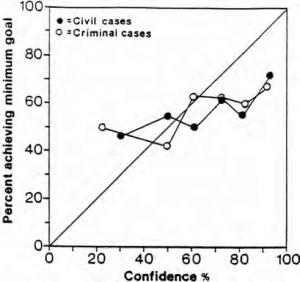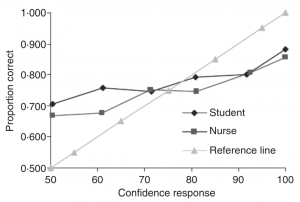|
|
| Line 43: |
Line 43: |
|
| |
|
| <!-- Definitions must be written with the Definition and Subdefinition templates. --> | | <!-- Definitions must be written with the Definition and Subdefinition templates. --> |
| {{Definition|Confidence Interval|A range of values within which we believe the true value lies, with some credence level.}} | | {{Definition |
| {{BoxTip|Confidence interval, when describing an instrumental measurement, corresponds to the statistical uncertainty.}} | | |Confidence Interval |
| {{BoxCaution|When one presents a scientific measurement, they are usually not presenting a ''specific'' value. They're presenting a range that the value is within and the likelihood that the true value is within that range.}} | | |A range of values within which we believe the true value lies, with some credence level. |
| {{BoxCaution|Different fields have different standards for confidence intervals. Physicists typically choose confidence intervals within which they are 68% sure the true value lies. Psychologists typically use 95%.}} | | |comments= |
| {{BoxCaution|There are other related terms like "standard deviation," "<math>\sigma</math>," and "standard error." Try to avoid this jargon. If students ask about these terms then discuss it outside of class and be mindful of students that haven't had a statistics class.}} | | {{BoxTip |
| {{Definition|Error Bars|A visual representation of the confidence interval on a graph.}} | | |Confidence interval, when describing an instrumental measurement, corresponds to the statistical uncertainty. |
| {{BoxTip|Error bars are typically drawn around a data point which is often the middle of the confidence interval.}} | | }} |
| {{Definition|Actively Open-minded Thinking (AOT)|A thinking style which emphasizes good reasoning independently of one's own beliefs by looking at issues from multiple perspectives, actively searching out ideas on both sides. It predicts more accurate calibration as well as the ability to evaluate argument quality objectively.}} | | {{BoxCaution |
| {{Definition|Growth Mindset|A mindset where people believe "intelligence can be developed" and their abilities can be enhanced through learning. This ''also'' predicts more accurate calibration of credence levels.}} | | |When one presents a scientific measurement, they are usually not presenting a ''specific'' value. They're presenting a range that the value is within and the likelihood that the true value is within that range. |
| | }} |
| | {{BoxCaution |
| | |Different fields have different standards for confidence intervals. Physicists typically choose confidence intervals within which they are 68% sure the true value lies. Psychologists typically use 95%.}} |
| | {{BoxCaution |
| | |There are other related terms like "standard deviation," "<math>\sigma</math>," and "standard error." Try to avoid this jargon. If students ask about these terms then discuss it outside of class and be mindful of students that haven't had a statistics class.}} |
| | }} |
| | |
| | {{Definition |
| | |Error Bars |
| | |A visual representation of the confidence interval on a graph. |
| | |comments= |
| | {{BoxTip |
| | |Error bars are typically drawn around a data point which is often the middle of the confidence interval. |
| | }} |
| | }} |
| | |
| | {{Definition |
| | |Actively Open-minded Thinking (AOT)|A thinking style which emphasizes good reasoning independently of one's own beliefs by looking at issues from multiple perspectives, actively searching out ideas on both sides. It predicts more accurate calibration as well as the ability to evaluate argument quality objectively. |
| | }} |
| | |
| | {{Definition |
| | |Growth Mindset |
| | |A mindset where people believe "intelligence can be developed" and their abilities can be enhanced through learning. This ''also'' predicts more accurate calibration of credence levels. |
| | }} |
|
| |
|
| |-|Examples= | | |-|Examples= |

